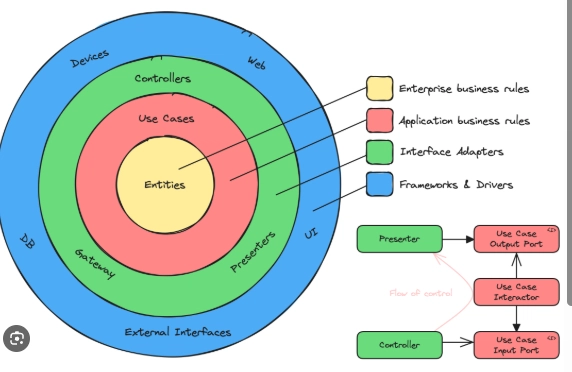JavaScript Design Patterns
JavaScript Design Patterns: A Concise Overview Introduction: JavaScript design patterns are reusable solutions to common software design problems. They provide a structured approach to building complex applications, improving code readability, maintainability, and scalability. Understanding these patterns allows developers to write more efficient and elegant code. Prerequisites: A solid understanding of JavaScript fundamentals, including objects, prototypes, functions, and closures, is necessary to effectively utilize design patterns. Familiarity with object-oriented programming concepts is beneficial. Advantages: Design patterns offer several advantages: Improved code organization: They promote modularity and reduce code duplication. Enhanced readability and maintainability: Code becomes easier to understand and modify. Increased reusability: Patterns can be applied across different projects. Simplified debugging: Well-structured code is easier to debug. Disadvantages: Increased complexity: Overusing patterns can lead to unnecessary complexity. Learning curve: Mastering design patterns requires time and effort. Potential for misuse: Incorrectly applied patterns can hinder performance and readability. Features (Examples): Several popular JavaScript patterns include: Module Pattern: Encapsulates variables and functions within a closure. const myModule = (function() { let privateVar = "Hello"; function privateFunc() { console.log(privateVar); } return { publicFunc: function() { privateFunc(); } }; })(); myModule.publicFunc(); // Outputs "Hello" Singleton Pattern: Ensures only one instance of a class exists. Factory Pattern: Creates objects without specifying their concrete classes. Observer Pattern: Defines a one-to-many dependency between objects. Conclusion: JavaScript design patterns are powerful tools that can significantly improve the quality of your code. Choosing the appropriate pattern for a specific problem requires careful consideration of the project's requirements and context. While they can add complexity, the long-term benefits in maintainability and scalability generally outweigh the initial learning curve. Understanding and applying these patterns is crucial for developing robust and scalable JavaScript applications.

JavaScript Design Patterns: A Concise Overview
Introduction: JavaScript design patterns are reusable solutions to common software design problems. They provide a structured approach to building complex applications, improving code readability, maintainability, and scalability. Understanding these patterns allows developers to write more efficient and elegant code.
Prerequisites: A solid understanding of JavaScript fundamentals, including objects, prototypes, functions, and closures, is necessary to effectively utilize design patterns. Familiarity with object-oriented programming concepts is beneficial.
Advantages: Design patterns offer several advantages:
- Improved code organization: They promote modularity and reduce code duplication.
- Enhanced readability and maintainability: Code becomes easier to understand and modify.
- Increased reusability: Patterns can be applied across different projects.
- Simplified debugging: Well-structured code is easier to debug.
Disadvantages:
- Increased complexity: Overusing patterns can lead to unnecessary complexity.
- Learning curve: Mastering design patterns requires time and effort.
- Potential for misuse: Incorrectly applied patterns can hinder performance and readability.
Features (Examples): Several popular JavaScript patterns include:
- Module Pattern: Encapsulates variables and functions within a closure.
const myModule = (function() {
let privateVar = "Hello";
function privateFunc() { console.log(privateVar); }
return {
publicFunc: function() { privateFunc(); }
};
})();
myModule.publicFunc(); // Outputs "Hello"
- Singleton Pattern: Ensures only one instance of a class exists.
- Factory Pattern: Creates objects without specifying their concrete classes.
- Observer Pattern: Defines a one-to-many dependency between objects.
Conclusion: JavaScript design patterns are powerful tools that can significantly improve the quality of your code. Choosing the appropriate pattern for a specific problem requires careful consideration of the project's requirements and context. While they can add complexity, the long-term benefits in maintainability and scalability generally outweigh the initial learning curve. Understanding and applying these patterns is crucial for developing robust and scalable JavaScript applications.










































































![Apple M4 MacBook Air Hits New All-Time Low of $824 [Deal]](https://www.iclarified.com/images/news/97288/97288/97288-640.jpg)
![An Apple Product Renaissance Is on the Way [Gurman]](https://www.iclarified.com/images/news/97286/97286/97286-640.jpg)
![Apple to Sync Captive Wi-Fi Logins Across iPhone, iPad, and Mac [Report]](https://www.iclarified.com/images/news/97284/97284/97284-640.jpg)
![Apple M4 iMac Drops to New All-Time Low Price of $1059 [Deal]](https://www.iclarified.com/images/news/97281/97281/97281-640.jpg)












![[Fixed] Gemini 2.5 Flash missing file upload for free app users](https://i0.wp.com/9to5google.com/wp-content/uploads/sites/4/2025/03/google-gemini-workspace-1.jpg?resize=1200%2C628&quality=82&strip=all&ssl=1)


![As Galaxy Watch prepares a major change, which smartwatch design to you prefer? [Poll]](https://i0.wp.com/9to5google.com/wp-content/uploads/sites/4/2024/07/Galaxy-Watch-Ultra-and-Apple-Watch-Ultra-1.jpg?resize=1200%2C628&quality=82&strip=all&ssl=1)






























































































































































































































![[The AI Show Episode 146]: Rise of “AI-First” Companies, AI Job Disruption, GPT-4o Update Gets Rolled Back, How Big Consulting Firms Use AI, and Meta AI App](https://www.marketingaiinstitute.com/hubfs/ep%20146%20cover.png)


































































































































































![Ditching a Microsoft Job to Enter Startup Purgatory with Lonewolf Engineer Sam Crombie [Podcast #171]](https://cdn.hashnode.com/res/hashnode/image/upload/v1746753508177/0cd57f66-fdb0-4972-b285-1443a7db39fc.png?#)


![[DEALS] Internxt Cloud Storage Lifetime Subscription: 10TB Plan (88% off) & Other Deals Up To 98% Off – Offers End Soon!](https://www.javacodegeeks.com/wp-content/uploads/2012/12/jcg-logo.jpg)
































































































